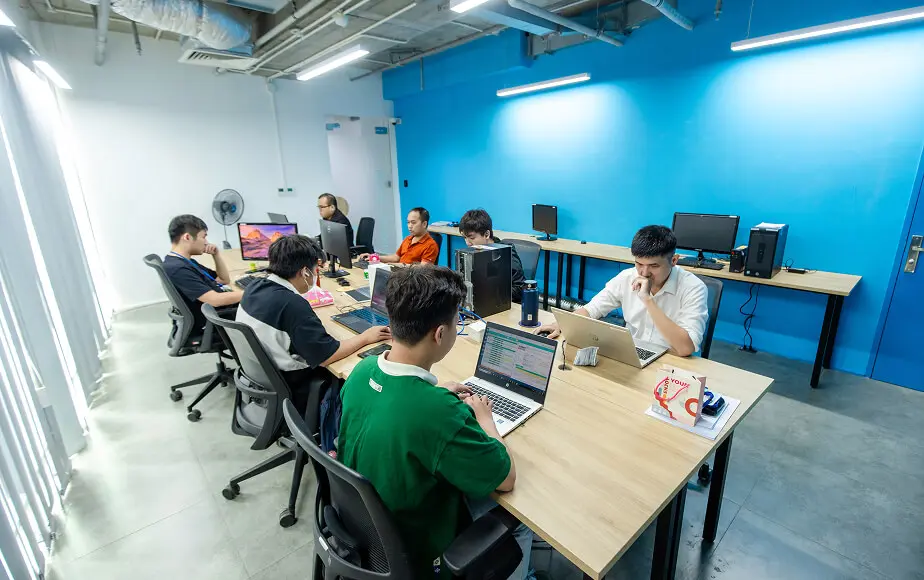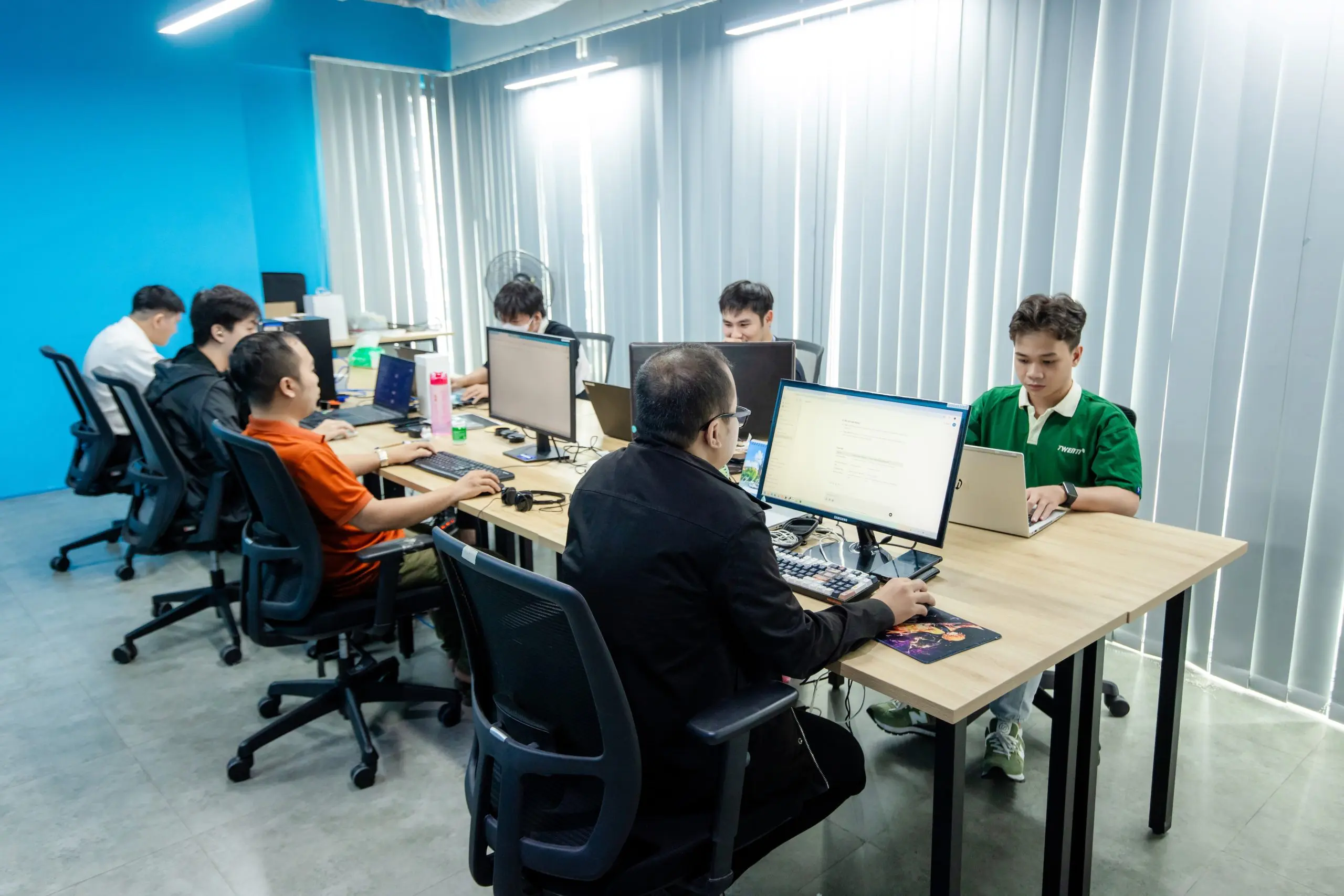2025/04/22
Share
"Why Not Give It a Try?" Offshore Development Work Through Communication (Part 1)
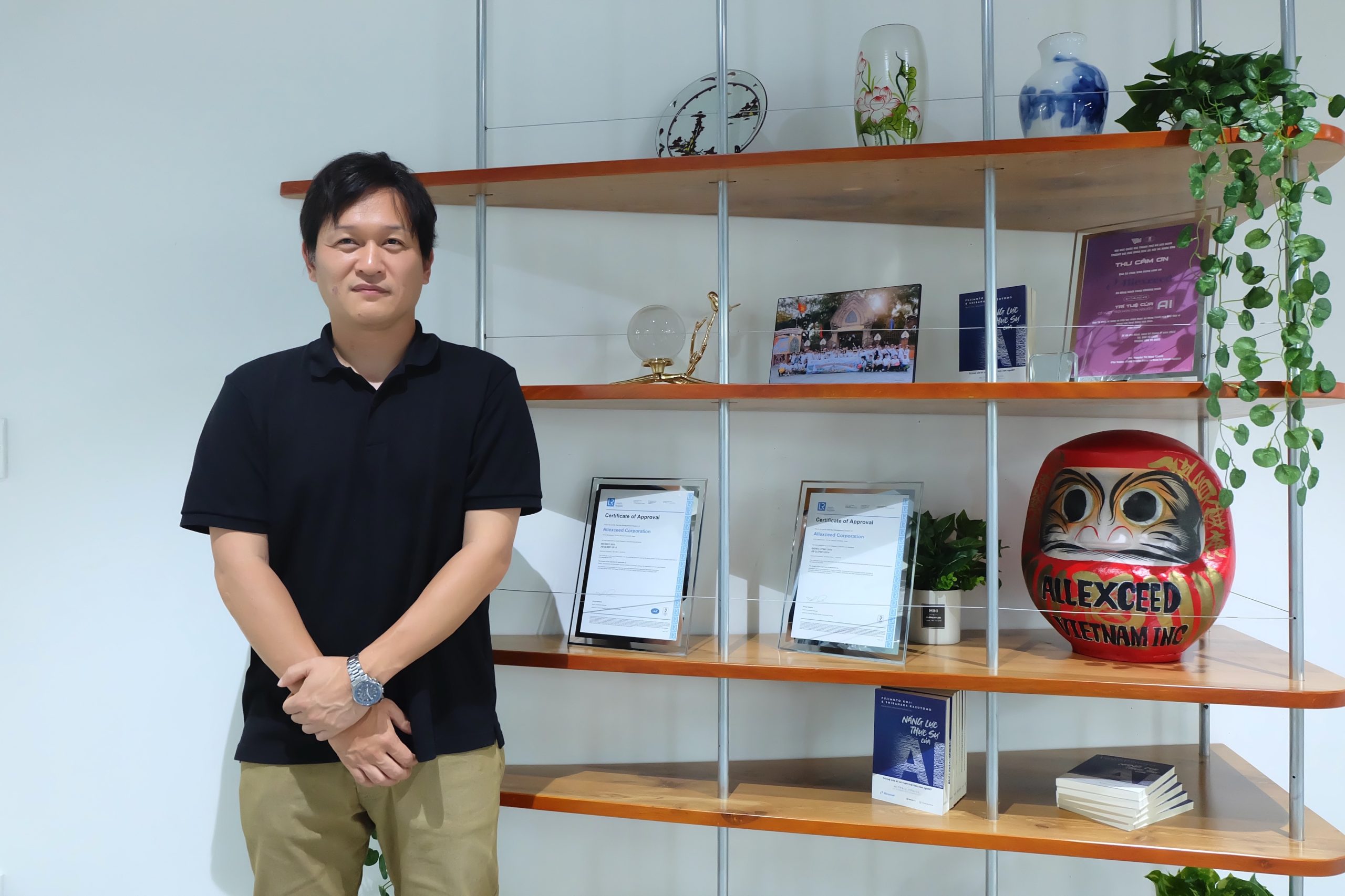
Client’s Challenges
- Difficulty in hiring engineers, especially in securing highly skilled talent.
- Unable to manage the workload with only in-house resources.
Our Company’s Solutions
- Established a system for close collaboration.
- Shared the overall vision of the development process.
Results After Our Initiatives
- Achieved a stable development process capable of delivering high-quality results we can consistently rely on.
Allexceed Co., Ltd., the parent company of Allexceed Vietnam, has been involved in software development for many years.
While maintaining a group company connection, Allexceed also has a deep relationship with Allexceed Vietnam as a client that commissions development work.
The company began its offshore development journey around 2006, stationing staff in Vietnam and outsourcing development to a local company. This led to the establishment of Allexceed Vietnam as a wholly-owned subsidiary in 2009, to which they have been entrusting development ever since.
This time, we spoke with Mr. Nakai, a developer at the parent company, who shared an in-depth look from the unique perspective of being both a client and a partner.
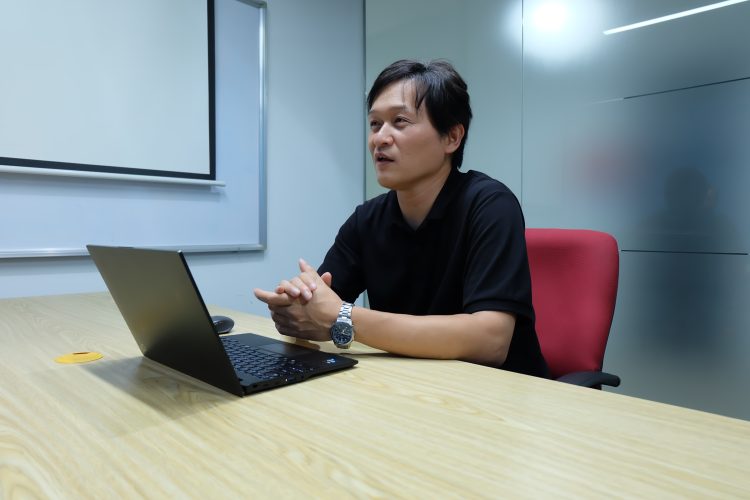
Could you briefly tell us about your business and your role, Mr. Nakai?
Our company primarily develops systems for three industries: cable television (CATV), medical, and logistics/manufacturing.
I currently serve as the Deputy Department Manager in the development division for the cable television industry. While my title is a management position, I am also frequently involved in the upstream processes with clients as a Project Manager.
In our development work with your company, my role includes progress management, coordination, and adjusting the overall volume of work we outsource.
I believe we’ve worked on a total of several hundred projects, both large and small, with Allexceed Vietnam.
What is the actual development workflow like with Allexceed Vietnam?
Basically, our company handles the upstream processes, such as requirements definition and communication with end-users, while we entrust the development and testing phases to your company.
However, the arrangement is flexible. There are cases where we handle the development ourselves, and other times we ask your team to take on everything up to detailed design and program design.
While the focus is on development and testing, depending on the project, we may ask for help with earlier-stage processes. Your team has always been very flexible in accommodating our needs.
We Make a Conscious Effort to Communicate
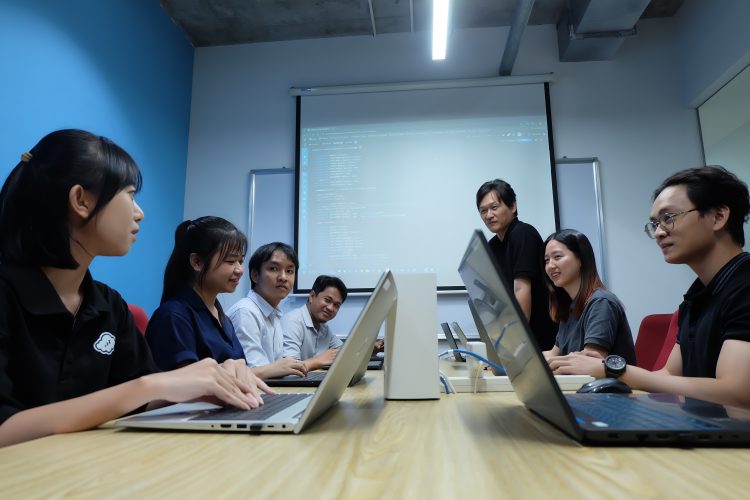
How do you coordinate with Allexceed Vietnam?
We maintain close collaboration through regular meetings on Zoom.
The frequency and content vary by project. Some projects have bi-weekly regular meetings, while others have weekly ones. We adjust flexibly.
Furthermore, we hold a managers’ meeting every Friday.
In addition to these, we hold ad-hoc meetings as needed for specific purposes, like “Let’s do a review,” or “Let’s hold a briefing or study session.”
We also have meetings to communicate on a broader scope, such as improving our development business processes.
It sounds like you communicate very closely.
Yes, we do make a conscious effort to communicate.
We usually hold our meetings online, but I also visit Vietnam two or three times a year to have discussions with your PMs and leaders in person.
Conversely, your staff sometimes come to our office in Japan to exchange ideas for process improvement.
On those occasions, our stance is always “Let’s make things better together.” We’re not there just to point out issues; we are committed to improving things through cooperation.
How do you handle project management as development progresses?
We used to use Redmine, but we have now switched to Backlog.
We adopted Backlog because it’s charged per workspace and has no limit on the number of accounts, which offers great flexibility.
For daily small chats and communications, we use Slack.
It must be smooth not having to prepare any special tools.
Backlog and Slack are visually intuitive, and they can be switched to English.
There are hardly any complex operations, so we don’t face any particular difficulties.
We don’t need to introduce any special “overseas” tools or use tools that don’t support Japanese just for our interactions with your company.
Do you ever interact directly with the Vietnamese engineers?
I sometimes communicate with them directly on Slack, but I don’t speak Vietnamese myself.
Each project has a dedicated interpreter who is also part of the Slack channel.
The system is set up so that I just need to mention the interpreter in a post, and they will handle the translation.
Work from Vietnam is Translated by the Next Morning
Is communication generally smooth?
We had some challenges at the very beginning, but we successfully managed them by increasing the frequency of our meetings.
In the past, we did face some difficulties due to variations in interpreters’ skills, but recently, we haven’t encountered any major problems.
However, for projects with many technical terms, industry-specific jargon, or IT-specific vocabulary, things might not go smoothly right at the start. But that’s true even when working with other Japanese people.
As the project progresses, everyone’s knowledge naturally gets updated, so we aren’t facing any particular issues now.
Furthermore, we have a translation team in Tokyo that has a dedicated system for handling translations on our tools like Slack and Backlog, so it’s very rare for us to be held up by translation delays.
Whether it’s in chat or on Backlog, we almost never find ourselves in a “waiting for translation” state.
Things are often translated immediately. I can’t recall feeling that “the translation is slow” at all recently.
On the Japan side, we leverage the time difference to make the translation process smoother.
Specifically, we have interpreters in Tokyo who start their day early. This means that work completed by your team at the end of their day is often already translated by the time we start our morning.
In fact, there are times when I see Backlog comments already translated in the early morning. I think the coordination is excellent and everything runs very smoothly.
I think it’s truly amazing.
A Project Where We Invited Members from Vietnam
You’ve worked on hundreds of projects with Allexceed Vietnam so far. Are there any that are particularly memorable?
We’ve done a huge number of projects, so it’s a bit difficult to pick just one (laughs).
But among them, there is one that stands out.
The project involved replacing a business application that was originally running on kintone with a new system developed by our company.
We were short on resources ourselves, so we needed to ask your team to handle the upstream processes, including the design phase.For that, we invited your PM and leaders to Japan, and we spent several months working on the design together.
We asked you to handle design work, which you don’t normally do for us, and we proceeded with development together. It was a high-difficulty project, and we faced many challenges in terms of man-hours and quality.
But that experience of having your team come all the way to Japan to design and develop with us has left a strong impression on me.
It’s a very memorable project because we managed to see it through from design to completion together, despite the overlapping challenges of its large scale, a tight deadline, and a shortage of resources.
Bringing members over really speaks to the scale of the project. Were there any key takeaways from that experience that led to improvements?
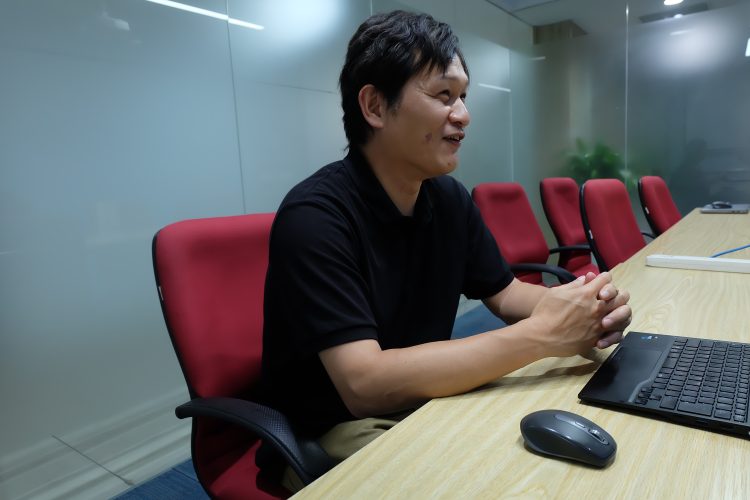
Yes, I think one of the biggest things was “establishing regular meetings.”
Before that project started, we didn’t even have regular meetings. By creating a venue where we could periodically share our progress and any issues, we were able to discuss and resolve problems on the spot as they arose.
If there were no problems, the meetings would end quickly. As we held them several times, the format of the meetings gradually became established, and we became more conscious of creating a system for smooth development through two-way information sharing.
Also, regarding the participants, we made sure to include not just your managers but also your development team members. This strengthened the feeling that we were “developing together” and was extremely effective from a communication standpoint.
So that led to the coordination meetings with Vietnam that you mentioned earlier.
When a project involves a certain number of people, an atmosphere of “this doesn’t concern me” can sometimes emerge, which weakens the sense of unity. This is especially true in challenging situations.
In times like those, having everyone meet face-to-face in regular meetings to share progress and challenges helped us align our pace and awareness. I truly felt the positive effects of doing so.


